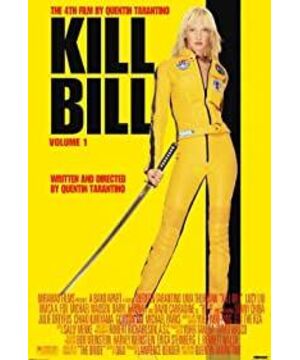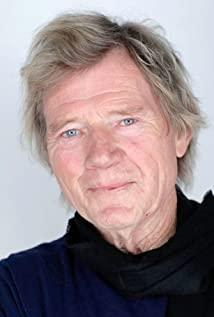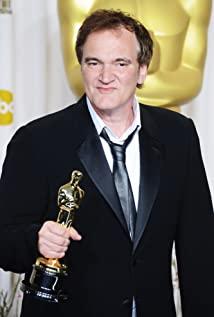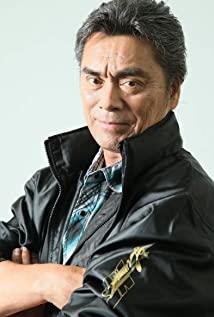Quentin Tarantino has always been understood by scholars as a representative of postmodernism. Postmodernism is derived from modernism but is rebellious against modernism. It is a reflection of the subjectivity and sense of richness and overallness of the Bodo people in the process of modernization. Criticizing and deconstructing the thinking modes of sex, centrality, and identity are also critiques and deconstructions of essentialism, fundamentalism, and "metaphysics of presence" of traditional western philosophy. Whether it is a falling water dog or a vulgar novel, to this killing Bill, we can find that Quentin uses his own understanding of the old film to mix with reality to form his own unique "spoof aesthetics" B-level film, we are in his film You can see the shadows of countless past movies. He collaged these fragments together with his own unique audio-visual language to immerse the audience in his movie universe. "Kill Bill" plays a very important part in Quentin's movies. He perfectly integrated the anti-climax design and his own movie feelings into this series and created a violent aesthetic that is different from directors such as Wu Yusen. Some climactic passages will give the audience sensory stimulation, but Quentin does not do so. There is a similar anti-climax drama point in "Kill Bill". When Hannah was sent to kill the bride, the audience Knowing that the protagonist will not die in this scene, so it will be difficult to master the schedule in such a scene. It is necessary to maintain tension and interest, but also to master the timing and rhythm, as well as a little humor. Also create a thrilling atmosphere for future story development. In the opening scene, Quentin used a blind-focused window screen to show that Hannah could not walk into the ward gracefully to complete the assassination. When Hannah entered the ward, the camera was always under the bed and then kept looking up until Hannah occupied most of the screen. At this time, the audience can feel the danger of her presence. Afterwards, Quentin used many close-ups to express the weakness of the bride at this moment. To ensure that the audience has no doubts, the camera cuts to the close-up of the needle sticking into the infusion tube again. The key plot. Then came the classic anti-climax design. Hannah’s shot was still the same as the previous composition. At this time, Quentin asked her to pick up the phone to relieve the pressure on the audience. At this time, the montage cut to Bill’s hand close-up, giving a kind of A sense of oppression. When the camera cuts back to the hospital scene again, we will obviously find that Hannah has walked to the window. At this time, in the whole picture ratio, the bride occupies a large proportion, which shows that the characters are out of danger. After the audience's psychology relaxed, the camera cut to Hannah's subjectivity again. This "horror film perspective" made the audience think that danger would happen again, but it stopped abruptly at this moment. In addition to his grasp of the camera, Quentin’s taste and selection of music are also very distinctive. In the game where the bride’s revenge is directly promoted to the killer, there are deep and vigorous jazz, kick drums, whistles, Chinese Xiao Yue and Japanese Bushido music and so on are Quentin's retro and reappearance of music, which seems to be out of step with the plot, but in fact it makes the rhythm more in line with the main line of blood and thriller of killer's revenge. In addition, the film uses black and white expressions many times. The black and white images bring the audience back from reality to memory, from tension back to calm, seemingly irrelevant. In fact, it is Quentin's transition method to complete the subversion and plot splicing. Without the transition between black and white and color, the blunt transition may damage the film’s psychological sense of time and space. It is precisely because the film adopts this method that the sequence of time and space is perfectly arranged, and the visual impact is just right to relax. This is also the characteristic of Quentin's grotesque style. In the second part, whether it was to weaken the fighting scene, Bill died in the hands of the bride in a few seconds or to win with a peaceful shot of salt bombs, they fully used the anti-climax design and the sound and picture counterpoint. Quentin’s violent aesthetics is not entirely based on his own thinking. On the contrary, his film has a lot of "usageism" which can also be called spoof aesthetics, which is different from the Chinese spoof aesthetics-a murder caused by a steamed bun. Instead, it collages classic clips from various movies or clothing collocations, so that the audience can watch this movie before. Susan Sontag once mentioned in her "Spoof Notes" "Spoofed taste has turned away from the common aesthetic axis of good and bad. However, what it wants to express is not-good is good, or bad is bad. It wants to provide a set of complementary standards for art and life." Spoofing never lacks the courage to break taboos, and what is worth thinking about lies in this kind of political subversiveness. Falling Water Dog pays tribute to Dragons and Tigers, and the Eight Evils pays tribute to Western films...There are not a few tribute elements in Quentin’s movies, especially killing Bill. I would rather understand that this is his love letter to Shaw Brothers martial arts films. At the beginning of Killing Bill, the famous Shaw Brothers trademark fragment was directly added. Quentin borrowed Shaw Brothers, and Shaw borrowed Warner Bros. This symbolic appropriation reflects the circulation of Hollywood and Hong Kong films. In the film, Quentin referred to "The Bride in Black", "The Vengeful Woman Shooter", "Xu Luo Xue Ji"... and the motif in the film revenge has always been a recurring theme in Chinese movies, Shao There are elements of revenge in all kinds of films of Mrs, especially the trilogy of "Love Slave", "Poisonous Girl" and "Death". Whether it is the plot or the design of the characters, Kill Bill pays tribute to him. Now, it also corresponds to the so-called female perspective. The sexual assault scenes in the four films did not write poems, but they were enough to arouse the anger of the audience and provide justifications for the subsequent revenge of the heroine. At the same time, the structure of the four films "Aggression-revenge-success" completely relies on the narrative to retaliate to hide this kind of sexual and violent exploitation. That is to say, the narratives of these films are based on the morally questionable foundation of sexual violence and obsession, but cunningly. Guide the audience to return to the traditional moral mainstream, which not only greatly satisfies the audience's visual experience, but also gives the audience a sense of moral appropriateness and relief, because the audience has been subdued by the strategy of justice in the film's narrative Up. Sex and even perverted visual perception have been transformed into a violent pleasure of retribution. In fact, there are not only the revenge proposition and tribute of Hong Kong movies, but there are also Japanese samurai movie elements in Kill Bill, whether it is a katana or a Japanese voice-over. "Those real warriors, in battle, the only purpose is to destroy the enemy and suppress all humanity. The emotions and sympathy in...
View more about Kill Bill: Vol. 1 reviews











